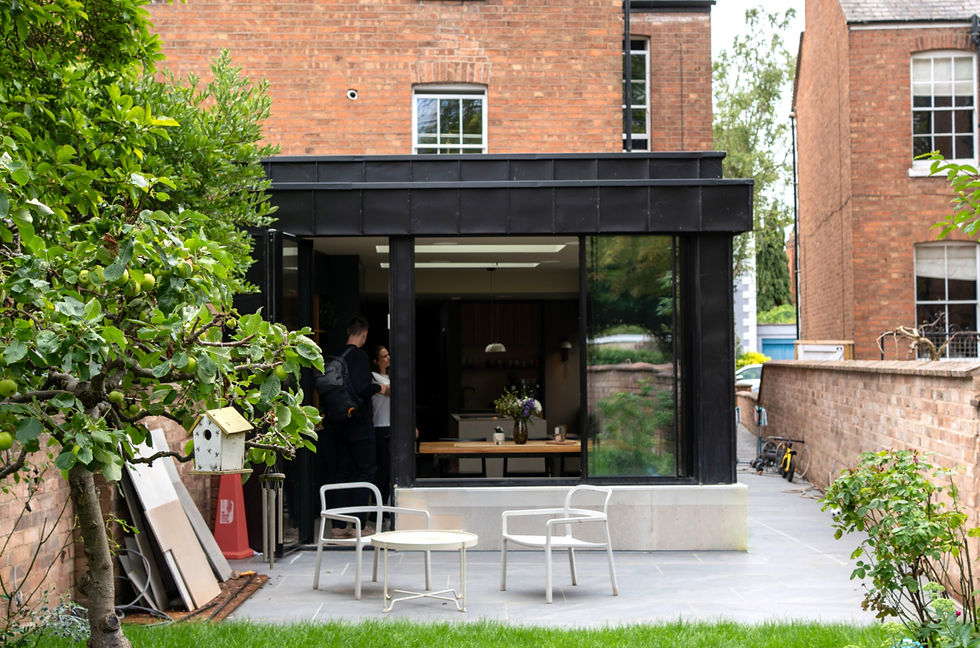Looking Ahead: What 2026 Holds for Architecture in the Age of AI
- Jeff Smith

- Jul 30
- 3 min read
Updated: Sep 8
As we move towards 2026, the world of architecture is embracing some of its most transformative changes yet—largely driven by the surge of artificial intelligence (AI). This powerful technology isn’t just influencing how buildings look; it’s reshaping how we design, interact with, and live within our spaces—pushing sustainability, adaptability, and wellbeing to the forefront.
Let’s explore five key trends shaping architecture in 2026, powered by the magic of AI.

1. Smart, Responsive Architecture: Buildings That Adapt to You
Gone are the days of static structures. In 2026, AI-driven design is enabling buildings to respond dynamically to their inhabitants’ needs. Smart homes use AI algorithms to analyse data—weather patterns, occupancy, energy use—to optimise everything from lighting and heating to ventilation in real-time.
Studies show such smart homes can reduce energy consumption by up to 30%, while improving comfort and convenience. The integration of IoT devices means these spaces aren’t just efficient—they’re intuitive, tailoring the environment to enhance health and lifestyle without compromising style.
2. Next-Level Sustainability: AI as the Green Architect’s Ally
With climate urgency intensifying, 2026 sees architects leaning heavily on AI to push sustainable design boundaries. AI-powered simulations evaluate the environmental impact of materials and construction methods, enabling designers to select options that reduce carbon footprints by as much as 40%.
On a broader scale, AI is also transforming urban planning—powering renewable microgrids, optimising energy use, and supporting innovations like vertical farming to blend nature and city life seamlessly. The result? Buildings and cities that aren’t just eco-friendly but truly regenerative.
3. Biophilic Design Meets AI: Deepening Our Connection to Nature
Biophilic design—the art of weaving natural elements into architecture—is gaining new depth thanks to AI insights. By analysing how light, colour, texture, and natural features impact wellbeing, AI helps architects create spaces that promote calm, boost productivity, and reduce stress.
For example, AI can simulate optimal daylight exposure throughout the day or suggest where to place living walls and water features to maximise psychological benefits. In 2026, homes and workplaces designed with biophilic principles aren’t just beautiful—they’re scientifically tuned for human health.
4. Immersive Design: Virtual and Augmented Reality Powered by AI
Virtual Reality (VR) and Augmented Reality (AR) technologies are revolutionising client collaboration and design refinement. Thanks to AI, architects can offer immersive 360-degree walkthroughs, allowing clients to experience a space before a single brick is laid.
This interactive approach increases client engagement and reduces costly redesigns—studies show VR-assisted projects can cut design revisions by up to 25%. AI even enables real-time adjustments during these virtual walkthroughs, turning architectural plans into living, breathing experiences.
5. Modular and Adaptive Buildings: Flexibility is the Future
Urban landscapes in 2026 are evolving with the rise of modular, adaptive architecture. AI-driven designs create structures that can be efficiently prefabricated, easily expanded, or reconfigured as needs shift—whether due to community growth or environmental factors.
Modular construction not only slashes waste by up to 60% but also halves build times, aligning with sustainability goals. AI simulations forecast future space demands, empowering buildings to morph and respond over time, ensuring longevity and resilience in rapidly changing cities.
The Role of AI in Enhancing Architectural Creativity
AI is not just a tool; it’s a partner in the creative process. By analysing vast amounts of data, AI can identify patterns and trends that may not be immediately apparent to human designers. This capability allows architects to push the boundaries of their creativity, exploring new forms and functions that enhance the user experience.
For instance, AI can suggest innovative materials or construction techniques that align with sustainability goals. This collaboration between human intuition and AI analysis leads to designs that are not only aesthetically pleasing but also environmentally responsible.
Looking Forward
The architectural trends unfolding in 2026 show a compelling future where AI and creativity intertwine to redefine our built environment. From smart, responsive homes to nature-integrated designs and flexible urban fabric, technology is helping us build spaces that are efficient, humane, and sustainable.
As we harness AI’s potential, architecture becomes not just about structures—but about crafting habitats that nurture people and respect the planet. The journey ahead promises innovation and inspiration alike—reminding us that the best designs are those that evolve with us and the world we live in.
In conclusion, the integration of AI in architecture is paving the way for a future that prioritises sustainability, adaptability, and user wellbeing. As we approach 2026, the architectural landscape will continue to transform, driven by the innovative possibilities that AI presents.




Comments